Deep Diver Courses: What You Really Need To Know!
Recreational Deep Diver courses are offered by most scuba training agencies and typically qualify the scuba diver to progress to the maximum depth of 40m/130ft. However, the contents and syllabus of Deep Diver courses can vary enormously.
Do all Deep Diver courses deliver the knowledge and training necessary to keep you safe when deep diving?
In this article, I will examine Deep Diver course training delivered to students compared to the actual risks involved with venturing deeper than 30m/100ft. This will identify where training deficiencies exist.
Recreational deep diving is a higher risk level. That necessitates appropriately higher-level training; a syllabus and skill performance standards that are legitimately more refined and sophisticated than what you learned as an entry-level scuba diver.
Far too many Deep Diver courses fall woefully short in delivering that skill refinement and diving sophistication.
If you are considering doing a Deep Diver course, you can use this article to help determine which course will deliver the most comprehensive and appropriate training to provide you with the best safety for deep diving.
What are the risks of deep diving?
It is not possible to assess the appropriateness of the training delivered on Deep Diver courses unless there is a comprehensive understanding of the risk factors that exist when deep diving.
The primary risks of deep diving
- Nitrogen narcosis
- Gas density
- CO2 narcosis
- Hypercapnia
- Increased gas consumption
- Decompression sickness (DCS)
- Gas depletion
For a comprehensive explanation of those risks, please see my article Understanding Deep Diving Risks:
What is a typical Deep Diver course syllabus?
Deep Diver courses typically include four training dives and some theory study.
Deep Diver course theory
The theory study generally expands upon the basic physiological and physics (gas laws) principles taught in the first chapter of entry-level Open Water Diver courses.
Given the obvious risks of diving to progressively deeper depths, what training are Deep Diver students actually given?
Deep Diver course training dives
Demonstration of Open Water chapter one theory
Typically, a majority of the in-water syllabus on Deep Diver course training dives tends to focus on nothing more than practically demonstrating the basic theoretical principles first learned in chapter one of Open Water course manuals.
Students are shown the effect of pressure on various objects, the loss of colour at depth and a superficial insight into the increase in gas consumption increase by comparing students’ gauges at depth.
None of this is new learning for the student or develops their competency for deep diving.
Most Deep Diver courses provide no information on deep diving risks like gas density or CO2 narcosis; despite authoritative dive safety organizations, such as DAN, having very clear public recommendations on those issues.
Those issues are entirely ignored by some mainstream dive training agencies. More experienced scuba divers should be able to speculate the reasons why that is.
Risk factors such as nitrogen narcosis and decompression sickness are typically taught in an exceptionally simplistic manner; far below a level of understanding that may be considered appropriate given the real-world risks that a deep diver is subjected to.
Many deep-diving courses wrongly teach the topic of nitrogen narcosis using unrealistic analogies to alcohol inebriation, when narcosis is actually a sedative effect upon cognition and consciousness.
Inappropriate narcosis analogies only serve to hinder divers from accurately perceiving the real-world signs and symptoms of nitrogen narcosis.
Likewise, many Deep Diver courses give inappropriate advice on how to deal with nitrogen narcosis. The advice given is woefully outdated and doesn’t reflect modern studies that show nitrogen narcosis impairment to be slow onset and persistent during ascent.
Redundant gas source use
Deep Diver course students will also typically learn to use a redundant gas source. This is beneficial training because it addresses the risk of gas depletion.
Sadly, on typical Deep Diver courses, this skill is merely covered as an addendum on one single dive. Consequently, there is little scope for the repetitive practice necessary to develop a reliable skillset that won’t immediately start fading away.
Unfortunately, this redundant gas source proficiency is frequently taught using a ‘drop bottle‘: a cylinder and regulator hung from a rope at safety stop depth beneath the dive boat.
Drop bottles are the least effective form of gas redundancy because they only mitigate risk IF the diver is able to ascend directly under their dive boat.
If a gas depletion emergency occurs away from the dive boat, the diver effectively has no redundant gas source to rely upon. Given that most dives are not contained by staying in the immediate vicinity of the dive boat, this method of gas redundancy is incredibly limited in real-world benefit.
Additionally, if gas depletion occurs on the bottom, the diver remains without a gas supply until they reach safety stop depth.
Survival is reliant upon a buddy diver being vigilant and skill-proficient enough to donate gas for the ascent to the safety stop. The buddy also has to have enough gas in their own cylinder to allow that. None of those necessities is reliable in real-world scuba diving.
Gas Management For Scuba Divers

The comprehensive, illustrated, metric guide to advanced gas planning and management for safer scuba diving. Only $9!
60 Pages. Printable PDF format. Fully Illustrated.
A far better solution for providing gas redundancy on deep dives is the use of pony cylinders: a dedicated small cylinder and regulator carried by the individual diver with a gas volume calculated to be sufficient for a safe ascent and safety stop.
An adequate pony cylinder volume would be 1/4 to 1/2 of the primary cylinder volume; i.e. a 3L (AL19), 4L (AL30) or 5L (AL40) cylinder if using an 11-12L (AL80) volume primary cylinder.
Because the diver carries this pony cylinder with them, it is immediately available to them throughout their dive. The diver is self-reliant and their survival does not depend upon the competency of their buddy.
They have the physical and psychological security of knowing they can always reach the surface safely if they make a mistake in their gas monitoring or suffer a regulator failure.
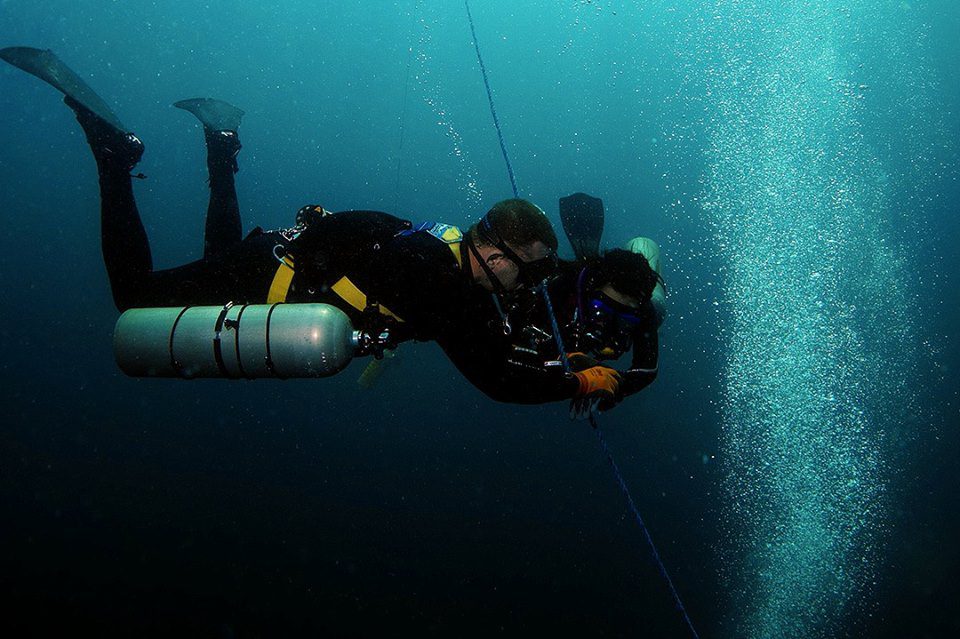
Emergency decompression
Most Deep Diver courses include simulated emergency decompression on a single training dive. This is a beneficial skill because the very short bottom times on deep dives dramatically increase the risk of overstaying at depth and accidentally exceeding no-decompression limits.
The typical method for simulating emergency decompression is by the deep diver students completing an arbitrary 10-minute stop at 5m (16′) depth.
This may have been adequate back when the majority of recreational divers used plastic dive tables for planning and conducting their dives. It is woefully insufficient training for the majority of modern scuba divers who use dive computers.
Dive computers don’t give arbitrary 10-minute emergency decompression stops. They switch into a dedicated decompression mode; designating a “ceiling” and providing a countdown of time before the diver can ascend above that ceiling. The emergency decompression stops will be at 3m (10′) increments down from the surface; not at safety stop depth. There will frequently be several of those stops; at 9m (30′), 6m (20′) and 3m (10′).
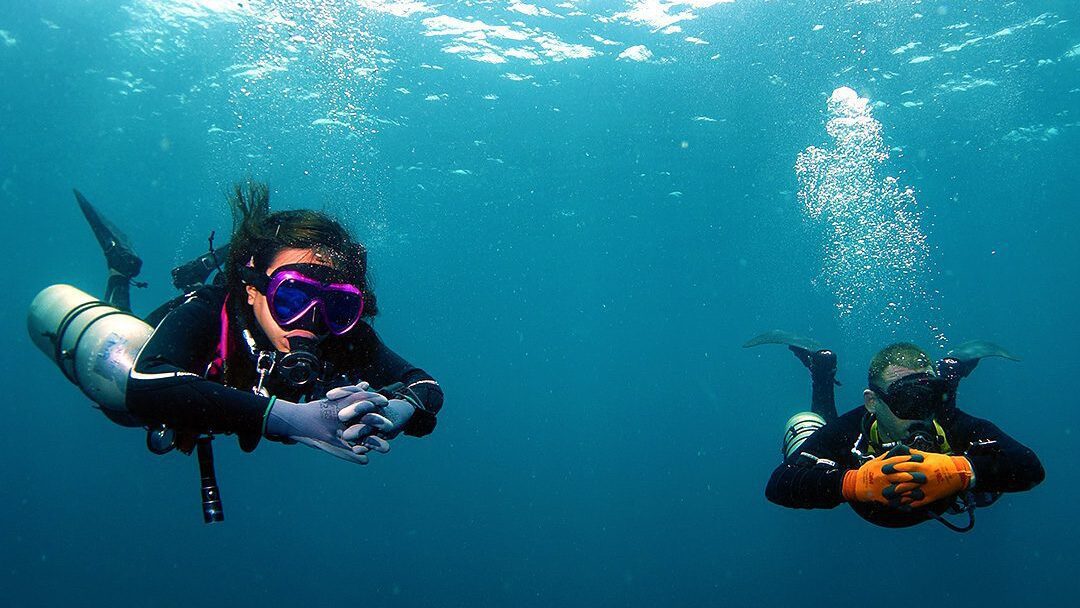
Recreational divers are unlikely to have ever encountered their computers’ decompression mode. They are even less likely to have used it. It will be very unfamiliar to them, and that lack of familiarity is the opposite of what is needed in a real-life emergency scenario.
If the goal of training is to provide students with a realistic demonstration of what will happen, and what they need to be able to do, then teaching arbitrary 10-minute stops at 5m (16′) has very little practical value for the majority of scuba divers.
A far better method of simulating emergency decompression is to use the student’s actual dive computers in decompression mode. That enables the student to become familiar with how their computer’s decompression mode is displayed, what it is telling them to do, and how they should follow those instructions.
There are simple ways to utilize a dive computer decompression mode without the diver actually going into real decompression. Unfortunately, many dive instructors either don’t know how or are not motivated to conduct simulated decompression training in a realistic manner.
Nitrogen narcosis demonstration
Most Deep Diver courses include a ‘narcosis test’ which is intended to help students observe cognitive impairment at depth. These tests can be very counter-productive to the intended goal. They do not account for the slow onset of nitrogen narcosis, nor do they usually include objective testing criteria that actually deal with novel problem-solving and reasoning abilities.
Because these demonstrative tests are fundamentally flawed, they can have an opposite effect to what was intended; they inadvertently ‘teach’ Deep Diver course students that they are not impaired by nitrogen narcosis. That isn’t just a failure in teaching, it actually promotes and enables a mindset and established beliefs that reduce diver safety.
What is missing from a typical Deep Diver course syllabus?
If we compare the risks of deep diving with the training and knowledge delivered on a typical Deep Diver course it becomes obvious that there are huge deficits.
Deep diving risks that are not addressed
Gas density
As I have mentioned earlier, the majority of Deep Diver courses entirely ignore the issue of gas density at depth. The typical recreational Deep Diver will not even be aware that this risk factor exists, or that major dive safety organizations publicly issue guidelines and recommendations about it.
CO2 narcosis
CO2 is 25x more narcotic than nitrogen and is metabolized within the body (especially the brain) rather than being absorbed slowly over time. Many recreational deep divers will have suffered from CO2 narcosis on occasion; it is a very frequent occurrence. Despite that, CO2 narcosis is rarely covered in Deep Diver course manuals. It is not explained or the symptoms described.
Deep diving proficiencies not adequately developed
Deep dive planning
Deep diving increases the number and severity of risks that divers are subjected to. Deep dives are both far less forgiving of diver errors and far more consequential in terms of potential injury or fatality.
Narcosis increases the likelihood of the diver making mistakes or losing situational awareness of bottom time, gas supply or buddy location, etc. These factors demand far more robust and comprehensive pre-dive planning. That planning should involve contingency plans; what the buddy pair or team of divers will do when a foreseeable problem occurs.
Having a detailed pre-existing plan, especially for contingencies, removes the need for en-situ problem-solving under the stress of a real emergency and when impaired by narcosis. If you have a pre-existing plan, then you can follow it. If/when you deviate from that plan, you have a warning that narcosis may be deteriorating your reasoning ability.
Ideally, every Deep Diver course should necessitate comprehensive pre-dive planning. That should include a detailed gas plan and contingency plans for all foreseeable emergencies.
Gas management
Deep divers should not venture to significant depths without a clear awareness of three essential gas management details:
- The volume of gas they have available on the dive.
- The amount of gas they will consume during the dive.
- The reserve gas necessary to assist a gas-depleted buddy to the surface safely.
As a minimum, Deep Divers need to be able to calculate:
- Cylinder gas volume content
- SAC (surface gas consumption)
- RMV (gas consumption at depth)
- Gas consumption for ascent and safety stop
- Gas requirements if donating AAS for ascent and safety stop
Ideally, every Deep Diver course should require the student to calculate their SAC rate following every training dive. They should use their SAC rate to plan their gas requirements for the subsequent training dives. They should do an exercise to calculate and appreciate their SAC rate when exerted or stressed. That accelerated SAC rate should be utilized in their pre-dive contingency planning.
Gas Management For Scuba Divers

The comprehensive, illustrated, metric guide to advanced gas planning and management for safer scuba diving. Only $9!
60 Pages. Printable PDF format. Fully Illustrated.
Redundancy and self-sufficiency
If we can accept that cognitive and situational awareness impairment from narcosis is a common feature in recreational deep dives, then it is logical to view the buddy system as a fallible means of ensuring survival under worst-case scenarios.
There is an increased risk of diver separation or your buddy being rendered incompetent to provide life-saving support; even assuming they were competent before narcosis had an effect.
Deep diver courses should contain comprehensive instruction on basic self-sufficiency; including the need for redundancy of critical life-support systems, especially gas supply.
Ideally, every Deep Diver course training dive should be conducted with a redundant gas supply carried by the student. They should be instructed on how to configure and operate redundant gas systems.
At least one training dive accent should be conducted using the redundant gas source.
Likewise, Deep Diver courses should provide instruction and real-world experience of dive gauge failure; especially dive computer failure.
Surfacing safely without knowing your depth, time or ascent rate is far more difficult in practice than it is theoretically. The first time that a deep diver encounters this scenario should not be on an unsupervised real-world deep dive.
Deep diver courses commonly fall well short of developing even basic levels of diver self-sufficiency, despite increased risks demanding that this proficiency and preparation is essential. In many cases, agencies separate this essential training into solo or self-sufficient diver specialty courses.
Divers should not have to complete multiple courses in order to mitigate known and foreseeable risks of deep diving. If a Deep Diver course claims to prepare divers adequately for deep diving, it should be complete, comprehensive, and address all the risks present.
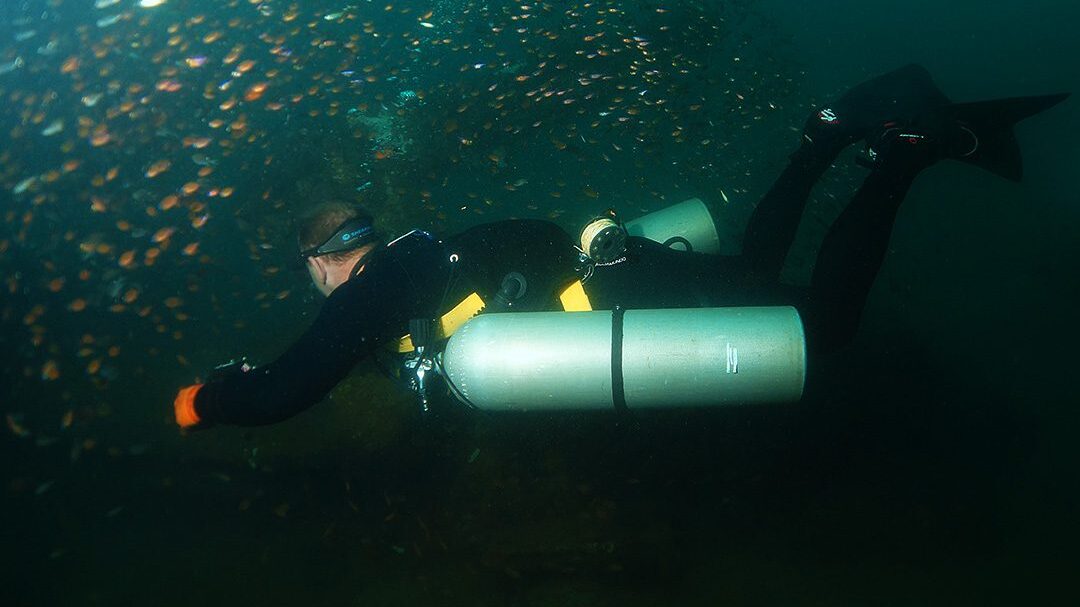
Descent procedures
Most Deep Diver courses do not teach a system of descent procedures.
Ideally, these procedures should include descent checks; where divers pause their descent briefly at a shallow depth to examine each other for gas leaks (bubble check), to quickly confirm that alternate air sources are accessible and functional (air-share check).
Performing descent checks has the added benefit of allowing more time for divers ears to equalize, and to ensure that BCDs are functional; because divers should become neutrally buoyant and hover when performing descent checks.
Descent procedures should also include a protocol for maintaining diver awareness and communication throughout the descent. Descents are the dive phase where buddy separation is most likely to occur, and that needs to be formally addressed during training.
Ascent procedures
Very few Deep Diver courses actually provide students with more refined procedures for ascending. That includes the knowledge and ability to control variable ascent rates and understanding why the ascent rate should vary depending on depth range and the pressure differential affecting the diver.
Few Deep Diver courses even progress student awareness of optimal ascent rate speed. In most cases, students qualify still under the wrong impression that “slower is better“. That is a misunderstanding that can easily expose them to increased risk from DCS.
Likewise, very few Deep Diver courses progress diver knowledge or protocols beyond conducting rudimentary 5m (16′) safety stops.
If we presume that recreational Deep Divers are more proficient than newly qualified Open Water divers, then it is not irrational to expect them to be capable of performing more complex, but far more beneficial, safety stop protocols.
These would include safety stops at multiple depths which are far more effective in eliminating nitrogen whilst also more effective in insulating the diver from the risk of bubble formation.
Situational awareness
I have mentioned that situational awareness is an early victim of narcosis impairment. Losing situational awareness is a contributing factor to many diving emergencies and accidents.
With that in mind, Deep Diver courses should provide specific training to develop consistent and reliable situational awareness.
It is a diving proficiency that should improve relative to the increasing dive complexity and risk that divers are subjected to.
Gas depletion emergencies
Gas depletion is a more frequent emergency on deep dives; whether that is because of impaired gas monitoring or regulator failure.
In recognition of that reality, deep diver training should provide far more comprehensive training on dealing with gas depletion emergencies.
That should include practising ascents, from actual deep diving depths, using redundant breathing sources AND buddy donation of alternate air sources. Air-sharing from 40m/130ft can be far more problematic than doing it from 10m deep on entry-level training.
As most Deep Diver course students would not have practised air-sharing ascents since the final dives of their Open Water course, both the Advanced Open Water and Deep Diver courses should reinforce and refresh this safety-critical skill with additional practice.
Fundamental skill refinement
Because the risk of DCS increases on deep dives, the ability to ascend at a consistent measured speed becomes more critical. The ability to perform safety stops with accurate and consistent depth control also becomes more critical.
Likewise, the risks of accidental gas depletion increase at depth. Reducing diver gas consumption by improving their core skills proficiency helps mitigate that risk.
For that reason, Deep Diver courses should focus some water training time on developing fundamental dive skills to a more advanced level. Those fundamental diving skills should include, precision buoyancy control, consistent horizontal trim and efficient propulsion techniques.
If students enrol on a Deep Diver course with proficiency deficits in their fundamental diving skills it should be addressed and remediated immediately; before the course progresses.
Sadly, that rarely happens and it has become normalized to allow students to flounder through their training and become certified for deep diving with fundamental skills remaining unacknowledged and unresolved. Personally, I feel that this is very negligent instruction.

Delayed surface marker buoy (DSMB) deployment
Recreational deep diving increases the risk likelihood that divers may not have sufficient gas or bottom time to return to their planned exit point. There is a multitude of circumstances when this would make DSMB deployment a prudent risk-mitigation action.
Ideally, Deep Diver courses should teach students should how to safely deploy a DSMB and ascend with it. Because this is a complex skill to perform safely, it should be practised over repetitive dives.
There is simply no excuse why Deep Diving course standards couldn’t incorporate this. The performance standards for these DSMB deployments should be measured in respect of time taken and safety; especially in eliminating the risk of entanglements and subsequent uncontrolled ascents.
Narcosis management
Most Deep Diver courses do not cover the issue of narcosis management beyond simplistic advice to limited diving depth if you perceive a debilitating level of narcosis impairment. That doesn’t actually empower you to conduct deep dives if you are a diver who is more readily affected by narcosis.
It can be helpful to know that other solutions are available; particularly the option to use helium in your diving gas. Gas mixes which include helium are known as ‘trimix’ or ‘heliotrox’. Helium is not very narcotic, so it is used to replace nitrogen in your gas mix.
More helium equals less narcosis and a lower gas density.
Some Deep Diver courses incorporate an option for training and qualification in recreational trimix use. I offer this. In other cases, you might have to pay for a separate recreational trimix course. The majority of mainstream recreational diving agencies don’t offer any trimix training for recreational divers.
For more detail, see my article: Why Do Deep Divers Use Helium?
Choosing the best Deep Diver course
Everything I’ve discussed already should give you a clear indication of what differentiates the best Deep Diver courses from the garbage.
When you start your journey as a scuba diver at entry level there are very few severe risks to address. The limitations on your diving ensure that you can make mistakes that are survivable. Mediocre quality training doesn’t imperil you.
It is important to recognize that as your diving level increases so do the risks that you are exposed to. The need for higher-quality, more comprehensive, training becomes increasingly critical.
If your Deep Diver course training is deficient, you will be unaware of risks, unable to mitigate those risks and less likely to safely resolve the foreseeable emergencies that arise.
Before committing to a Deep Diver course, invest a little time and effort into researching the actual training proficiencies and knowledge that will be delivered. Don’t be hesitant to ask your prospective course provider to explain their training syllabus and the specific standards they will teach you to attain.
Inquire about the relative experience of your instructor. Optimally, they should be qualified above the level they are teaching at. For recreational Deep Diving courses, a higher level of training for your instructor would equate to qualification as a technical diver.
This would ensure that they have ample training and experience in the real-world performance of the course proficiencies they’ll be teaching you as deep-diving emergency contingency skills.
A Deep Diver course needs to be so much more than four glorified fun dives that demonstrate the most basic dive theory and tick some boxes performing unrealistic superficial skills. If you want to take your diving to a higher level, find the best course that actually makes you a higher-level diver.
Gas Management For Scuba Divers

The comprehensive, illustrated, metric guide to advanced gas planning and management for safer scuba diving. Only $9!
60 Pages. Printable PDF format. Fully Illustrated.
About The Author

Andy Davis is a RAID, PADI TecRec, ANDI, BSAC, and SSI-qualified independent technical diving instructor who specializes in teaching sidemount, trimix, and advanced wreck diving courses.
Currently residing in Subic Bay, Philippines; he has amassed more than 10,000 open-circuit and CCR dives over three decades of challenging diving across the globe.
Andy has published numerous diving magazine articles and designed advanced certification courses for several dive training agencies, He regularly tests and reviews new dive gear for scuba equipment manufacturers. Andy is currently writing a series of advanced diving books and creating a range of tech diving clothing and accessories.
Prior to becoming a professional technical diving educator in 2006, Andy was a commissioned officer in the Royal Air Force and has served in Iraq, Afghanistan, Belize, and Cyprus.
In 2023, Andy was named in the “Who’s Who of Sidemount” list by GUE InDepth Magazine.
Purchase my exclusive diving ebooks!
Originally posted 2015-06-16 17:50:23.

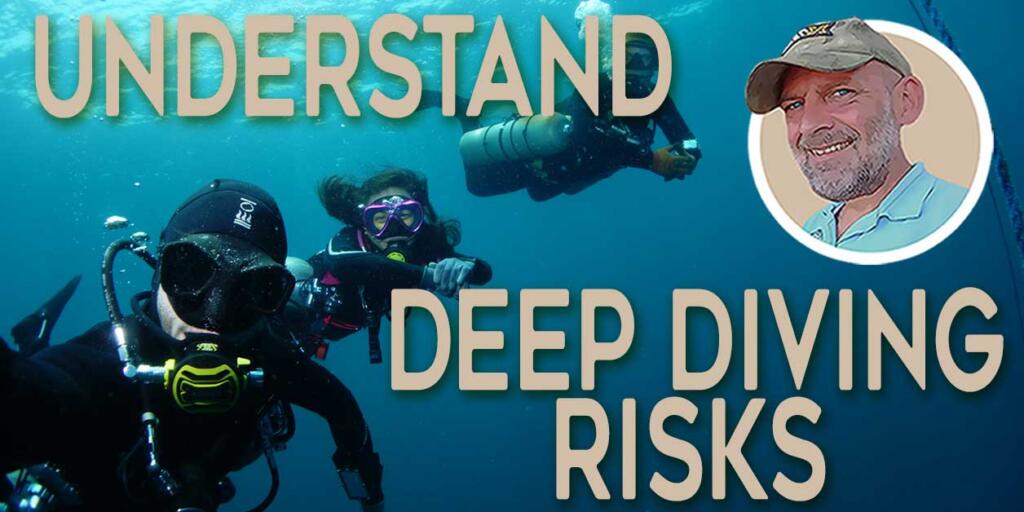






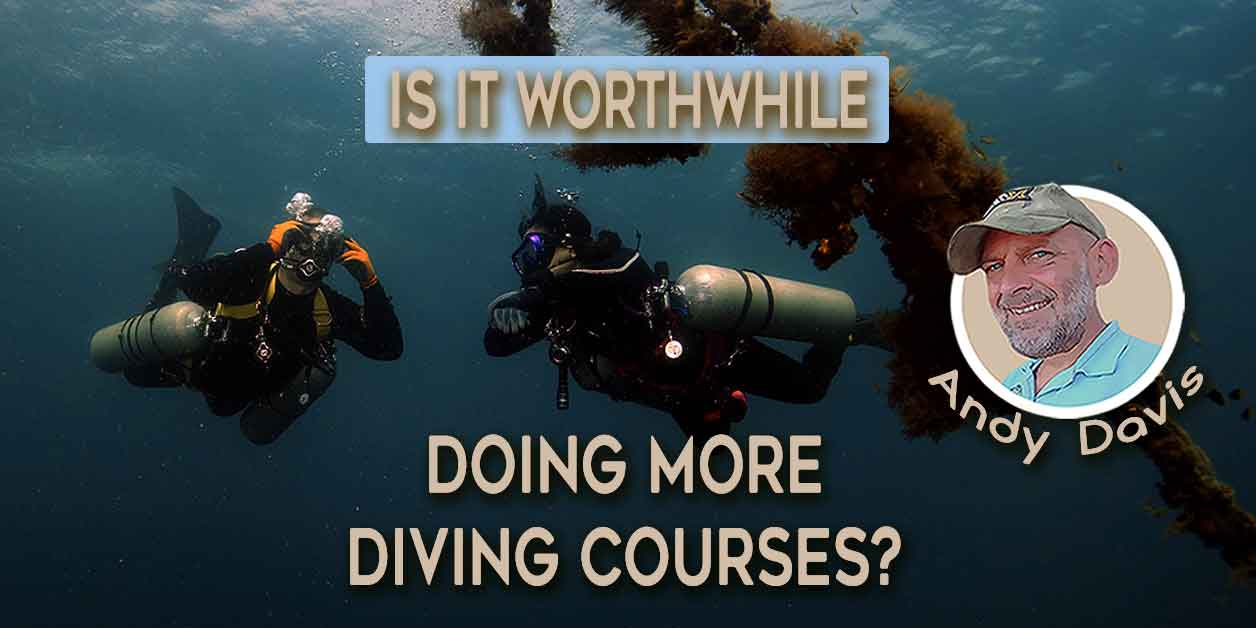



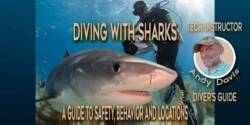
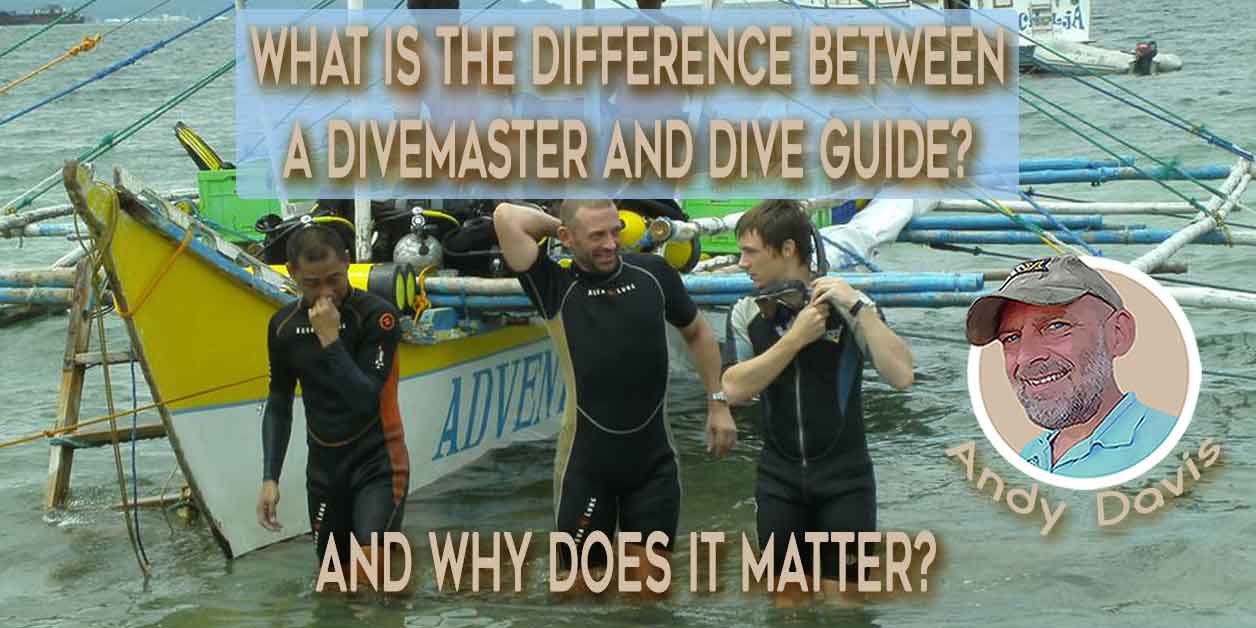
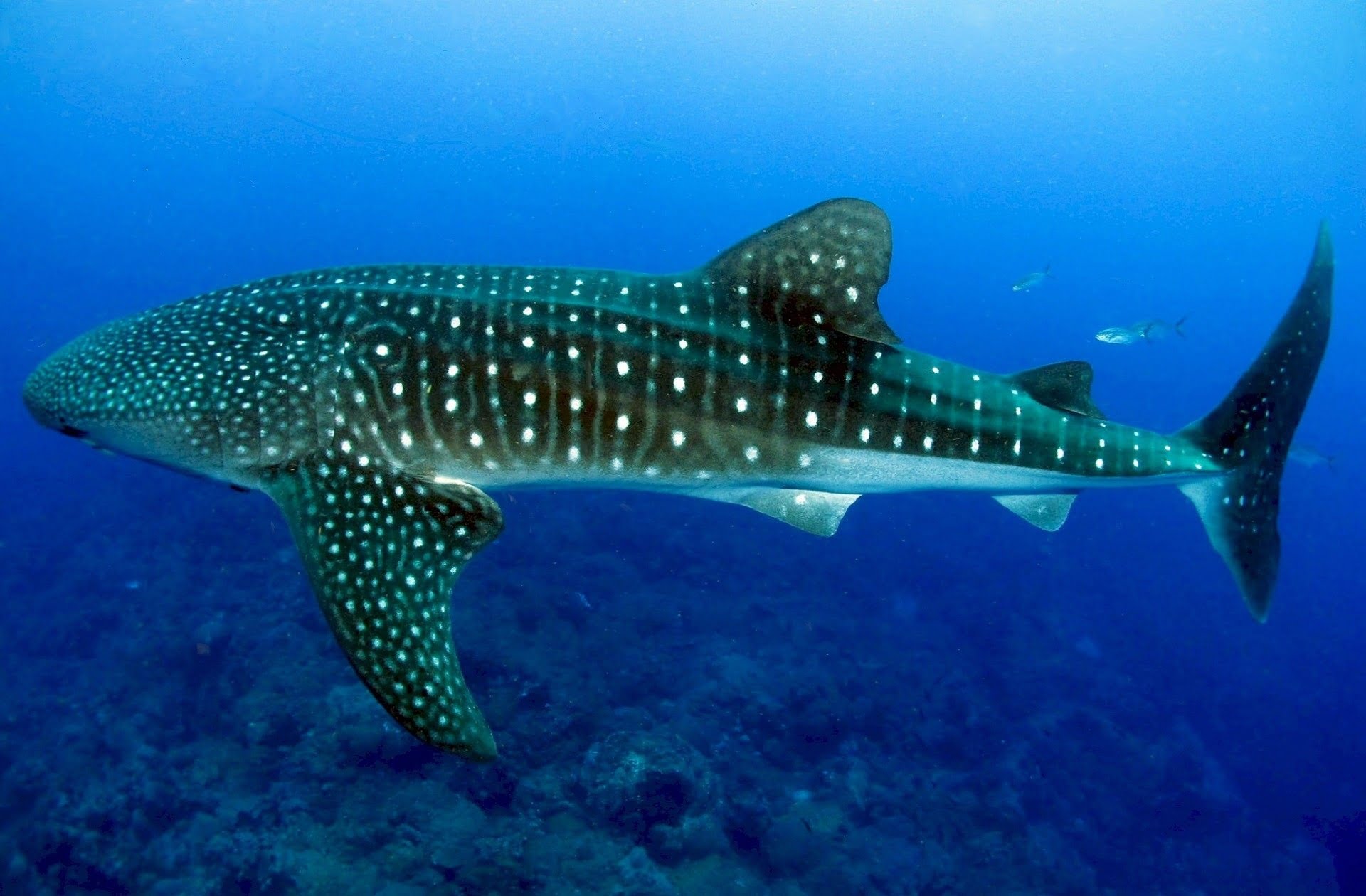
I didn’t feel that those issues specifically pertained to Deep Diver courses. They should be covered in Nitrox/EANx training; which should be a prerequisite for Deep Diver courses (but sadly is not for some training agencies).
A very good and comprehensive article, however, why is O2 toxicity and MOD for Nitrox not mentioned?